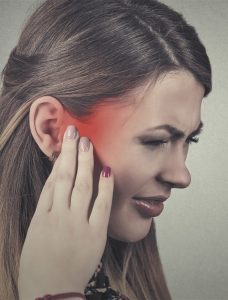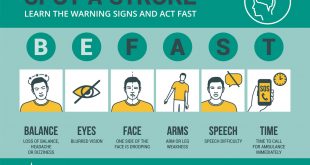By Dr. Drew Hall


TMJ and TMD, commonly used interchangeably, refer to issues affecting the jaw joint and its surrounding muscles. These conditions can manifest in jaw pain, difficulty in chewing, and even headaches. Surprisingly, they frequently coincide with tinnitus, the perception of noise or ringing in the ears, and Eustachian tube dysfunction, which involves problems with the tube connecting the middle ear to the back of the nose.
The neck, a powerhouse of support and mobility, plays a pivotal role in this intricate dance of symptoms. When the neck’s biomechanics are compromised, it can amplify the impact of TMJ, TMD, tinnitus, and Eustachian tube dysfunction. This correlation emphasizes the importance of considering the neck in the evaluation and treatment of these interconnected conditions.
Research suggests that a misalignment in the cervical spine or tension in neck muscles can contribute to TMJ and TMD symptoms. The nerves and blood vessels that traverse the neck are closely linked to the temporomandibular joint, influencing its function. Addressing neck-related issues becomes paramount for a holistic approach to managing TMJ and TMD.
Similarly, the connection between tinnitus and neck issues is gaining attention in the medical community. The auditory pathway is intricately linked with the cervical spine, and disruptions in neck function can contribute to the development or exacerbation of tinnitus. Understanding and addressing neck-related factors may thus be a key aspect of managing tinnitus.
Eustachian tube dysfunction, responsible for ear pressure and related issues, is not exempt from this correlation. The Eustachian tube’s alignment and function are influenced by the surrounding structures, including those in the neck. A holistic evaluation that considers the neck’s role in Eustachian tube function can offer valuable insights into treatment strategies.
Effective management of these interconnected conditions often involves a multidisciplinary approach. Dentists, ear, nose, and throat specialists, and chiropractors may collaborate to address the diverse facets of TMJ, TMD, tinnitus, and Eustachian tube dysfunction. A comprehensive assessment that includes an evaluation of the neck’s biomechanics can guide targeted interventions.
Therapeutic interventions may encompass physical therapy, chiropractic adjustments, and exercises to enhance neck mobility and strength.
In some cases, lifestyle modifications, stress management, and relaxation techniques may also be beneficial. Customized treatment plans tailored to the individual’s specific combination of symptoms can yield more effective results.
Patient education is a crucial component of managing these conditions. Empowering individuals with knowledge about the intricate links between TMJ, TMD, tinnitus, Eustachian tube dysfunction, and the neck encourages active participation in their well-being. Awareness of lifestyle factors, posture, and stress management can significantly contribute to symptom relief and prevention.
In conclusion, the correlation between TMJ, TMD, tinnitus, Eustachian tube dysfunction, and the neck underscores the complexity of these conditions. A comprehensive understanding of their interconnected nature is essential for devising effective treatment strategies. By recognizing the role of the neck in influencing these conditions, healthcare professionals can offer more targeted interventions, providing patients with a pathway towards improved quality of life.
Schedule a no obligation FREE consultation in our office today!
Sarasota Upper Cervical Chiropractic
941.259.1891
sarasotauppercervical.com
 Southwest Florida's Health and Wellness Magazine Health and Wellness Articles
Southwest Florida's Health and Wellness Magazine Health and Wellness Articles

